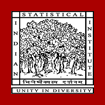Date of Submission
9-28-2015
Date of Award
9-28-2016
Institute Name (Publisher)
Indian Statistical Institute
Document Type
Doctoral Thesis
Degree Name
Doctor of Philosophy
Subject Name
Mathematics
Department
Economics and Planning Unit (EPU-Delhi)
Supervisor
Sen, Arunava (EPU-Delhi; ISI)
Abstract (Summary of the Work)
Conversion of land use from agriculture to industry is a typical feature of economic development in many densely populated countries. Large scale construction often requires industry or the government to acquire vast areas of land that are inhabited and often cultivated, by hundreds and even thousands of people. For some landowners, possession signifies power and status in society, while for others, it is the only means for earning a livelihood.Adamopoulos and Restuccia (2014) use data from World Census of Agriculture to show that average farm size in the poorest 20% of countries is 1.6 hectares, while that in the richest 20% of countries is 54.1 hectares. In poor countries very small farms (less than 2 hectares) account for over 70% of total farms, whereas in rich countries they account for only 15%. In poor countries there are virtually no farms over 20 hectares, while in rich countries they account for 40% of the total number of farms. Therefore, a large number of agricultural plots have to be acquired in order to implement large projects like factories or highways. Further, these plots have to be contiguous to maintain continuity of rights of passage as well as to exploit economies of scale.Land acquisition refers to situations where a single buyer purchases a set of land plots from multiple landowners. Often plots are required to be contiguous so that large scale construction can take place. If prices acceptable to the buyer and the landowners are publicly known, an efficient outcome is easily achieved: trade takes place with the owners of the cheapest set of contiguous plots. But in real-life situations such information is not public. The buyer then has to negotiate with individual sellers who can respond by delaying strategically - this is commonly known as holdout. In such exchange problems with asymmetric information, sellers can extract rent due to their private information (information rent) as well as due to their location.Often, the land acquisition exercise needs assistance from a third party, like the State. The State can either negotiate with the farmers, or coerce them to trade by means of constitutional powers, or subsidize the transaction. Coercion by the State often leads to conflicts of social, political and economic significance.Events in Singur, West Bengal (India) in 2006 highlight the dangers of ill-conceived land acquisition policies (Wikipedia, 2014b). West Bengal is a densely populated state where growth relative to other states in India has been low. In an effort to encourage industrial development, the ruling State Government led by Communist Party of India (Marxist), (CPIM), sought to acquire land in order for Tata Motors (a private company) to set up a manufacturing unit. The project by Tata Motors involved the production of the $2500 Nano automobile. About 1000 acres of agricultural land, some of it fertile and multi-cropped, was acquired by the State Government using the provisions of the Land Acquisition Act, 1894. The acquired area was owned by more than 13000 farmers. Eventually more than 2000 of them refused to accept the compensation package.
Control Number
ISILib-TH407
Creative Commons License

This work is licensed under a Creative Commons Attribution 4.0 International License.
DOI
http://dspace.isical.ac.in:8080/jspui/handle/10263/2146
Recommended Citation
Sarkar, Soumendu Dr., "Mechanism Design for Land Acquisition." (2016). Doctoral Theses. 259.
https://digitalcommons.isical.ac.in/doctoral-theses/259



Comments
ProQuest Collection ID: http://gateway.proquest.com/openurl?url_ver=Z39.88-2004&rft_val_fmt=info:ofi/fmt:kev:mtx:dissertation&res_dat=xri:pqm&rft_dat=xri:pqdiss:28843037